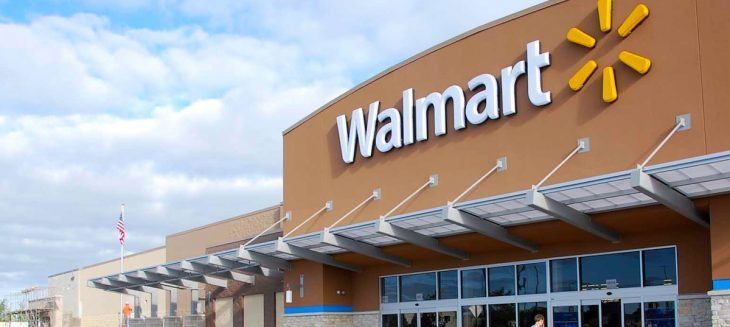Walmart U.S. in price war with competitors, margins at risk but growth expected
by April 13, 2017 5:53 pm 1,101 views

Price wars between Walmart U.S. and its retail competitors are eroding margins cautions BMO Capital analyst Wayne Hood.
He recently noted to investors that the retail giant in six major business units posted steeper rollbacks in February and March. Hood said in grocery, which accounts for 56% of U.S. sales, price rollbacks averaged between 25%-26% in the past two months. In January the average rollback was 24%.
Hood said the rollbacks are much deeper in other categories. For example, household essentials had price rollbacks of 43% in March compared to 39% in February. In food, BMO found average price reductions of 18%. He said baby and beauty categories were also seeing increased promotional activity in March, compared to the prior two months. With shelves stocked for Easter, Hood said Walmart U.S. has also aggressively priced seasonal products such as baskets, candy and other Easter items.
Wal-Mart Stores CEO Doug McMillon has made it clear the retailer will win on price and will continue to pressure suppliers for their absolute lowest cost. Still Walmart U.S. is routinely higher on produce and dairy than low cost grocery Aldi. And in other markets Kroger, Publix and H-E-B are tough competitors for Walmart U.S. grocery.
Hood said the data trend on deeper price reductions has raised concerns for the first quarter same-store-sales forecast of 1.5%, which is slightly above consensus at 1.3% He said it looks as if Walmart U.S. could be closer to the low end or even below its own guidance of 1%. BMO Capital expects Wal-Mart shares to underperform the market with a $63 price target. The firm reiterated that rating on April 7.
PRICE INVESTMENTS
Other investor groups are also watching the grocery price war between Walmart U.S. and Kroger. Barclays conducted its own grocery pricing research between Walmart U.S. and Kroger that has been escalating for several months in certain markets. Recent price checks between the two grocers in Nashville, Tenn., found Walmart’s groceries were about 4% less expensive than the same products sold at Kroger. The pricing survey checked a basket of 78 items sold in each store and Barclays found Walmart offered lower prices on 74% if the items checked.
One area where Kroger won out over Walmart was in “fresh” which includes, dairy and vegetables. Barclays said Kroger was 3.3% cheaper in the “fresh” category mostly because of promotional items. Without the promotion, Walmart was 15% less expensive, according to Barclays. In non perishables and frozen items Walmart prices were 5.6% less expensive than Kroger’s on average in this survey.
Barclays analysts said Kroger is likely to feel the brunt of a price war and despite being a solid grocery operator keeping up with Walmart’s price investments may be difficult to overcome. Barclays is “overweight” on its recommendation of Wal-Mart Stores projecting a target share price of $82.
In the highly competitive Florida market, Raymond James & Associates recently conducted a pricing comparison between Walmart U.S., Target, Publix as well as Amazon Prime Now in the Tampa Bay area. When looking at the branded baskets of goods Raymond James found Target moving closer to Walmart’s prices. For instance branded basket savings were 5.1% cheaper at Walmart than Target in March, compared to 5.6% in February. The branded basket savings gap between Walmart and Publix increased by 0.3% in March to 20.8%. This study found Walmart to have consistent savings on branded items when compared against Target and Publix.
When comparing against Amazon Prime Now the analysts found Walmart to be $18.63 cheaper than Amazon on a branded basket of 35 items. The study found Amazon to be cheaper on six items and priced the same as Walmart on four other products. Kelloggs Frosted Flakes were 65 cents cheaper with Amazon, and a 12-pack of Coca Cola was 68 cents cheaper. However the vast majority of items from Tide laundry detergent to Tyson Frozen Chicken Nuggets were cheaper at Walmart. Raymond James is bullish on Wal-Mart shares giving the company a “strong buy” rating with a target price range of $72 to $82.
GROWTH OPPORTUNITY
While analysts are aware of margin compression among competitive food retailers, Moody’s said the sector should see decent growth opportunity this year. Moody’s analyst Mickey Chadha expects U.S. supermarket sector operating profits to grow as much as 8% this year as deflationary pressures abate. Last year operating profits in the segment dropped 5%, Chadha said that won’t be the case in 2017 as growth begins to accelerate in the back half of this year.
Moody’s now expects food at-home prices to rise about 1% in 2017, relieving some of the pressure on supermarkets’ top-line. Despite competition from online grocery, Chadha said the overall food retail market is expected to grow an average of 2%-3% annually. Online food purchases accounted for just 1% of U.S. food retail last year. Chadha expects to see further consolidation in the supermarket industry as regional chains expand their geographic reach and unprofitable stores are divested or shuttered.
Shares of Wal-Mart Stores (NYSE: WMT) closed Thursday (April 13) at $73.42, down 29 cents. Over the past 52 weeks the share price has ranged between $62.72 and $75.19.
